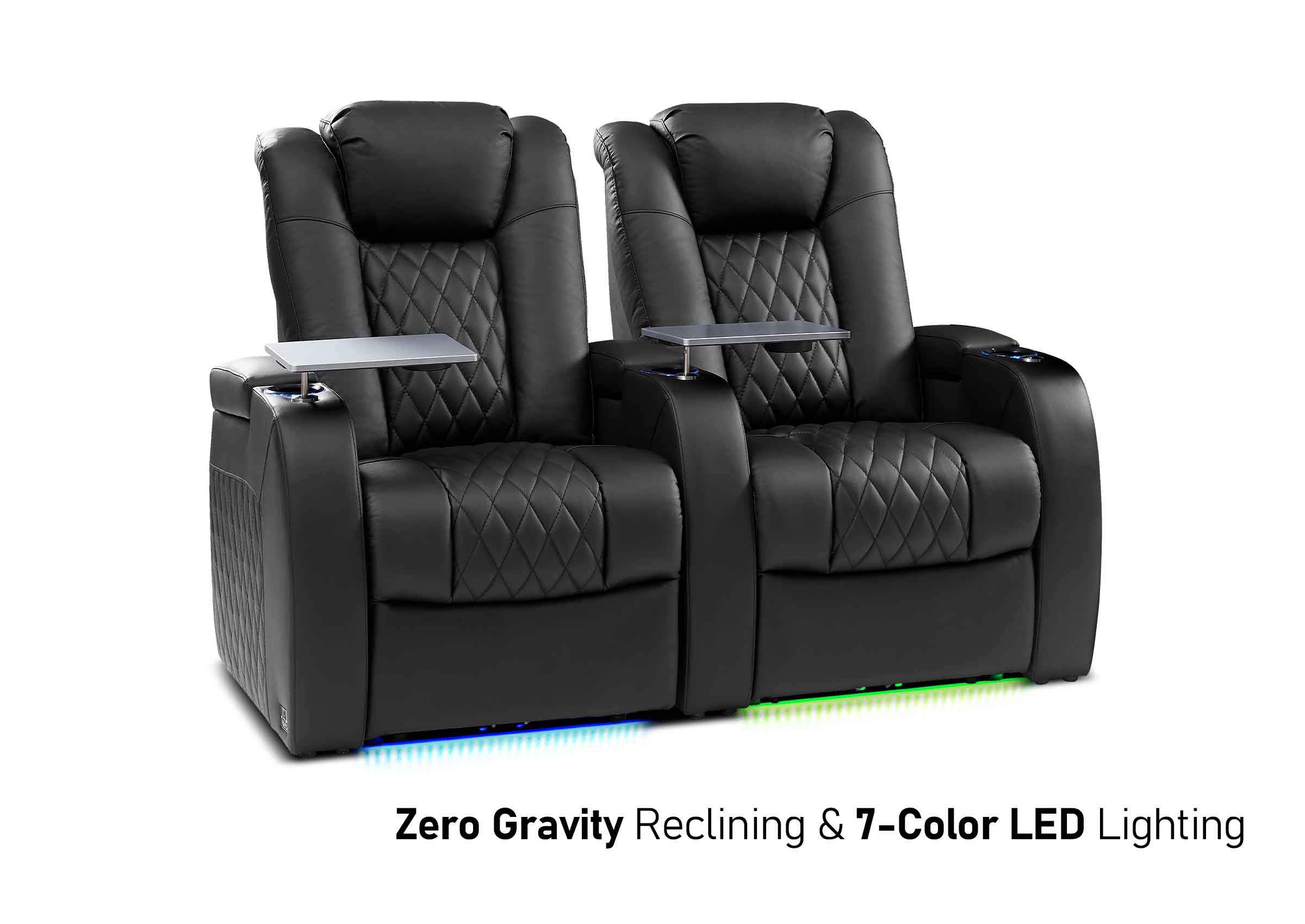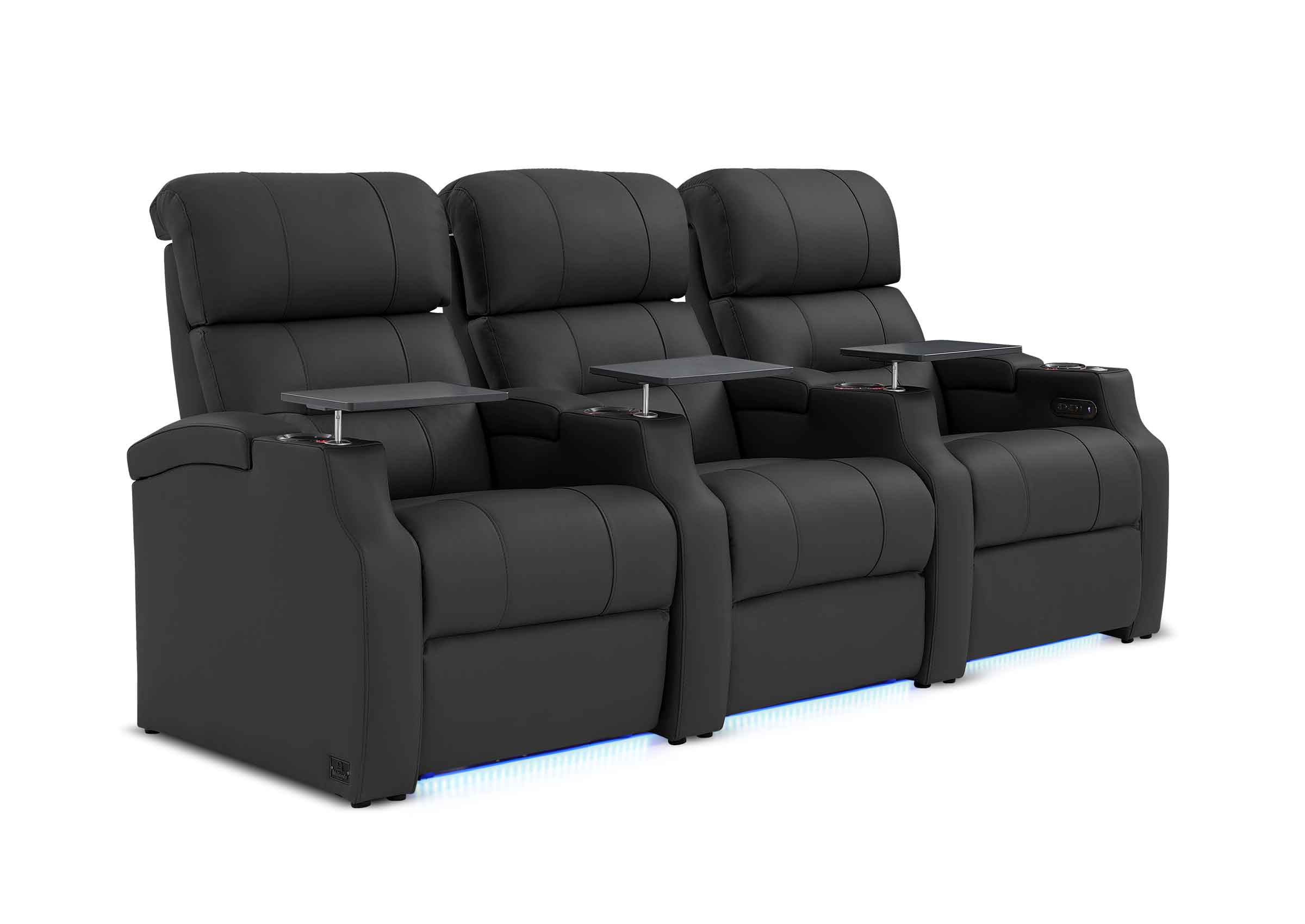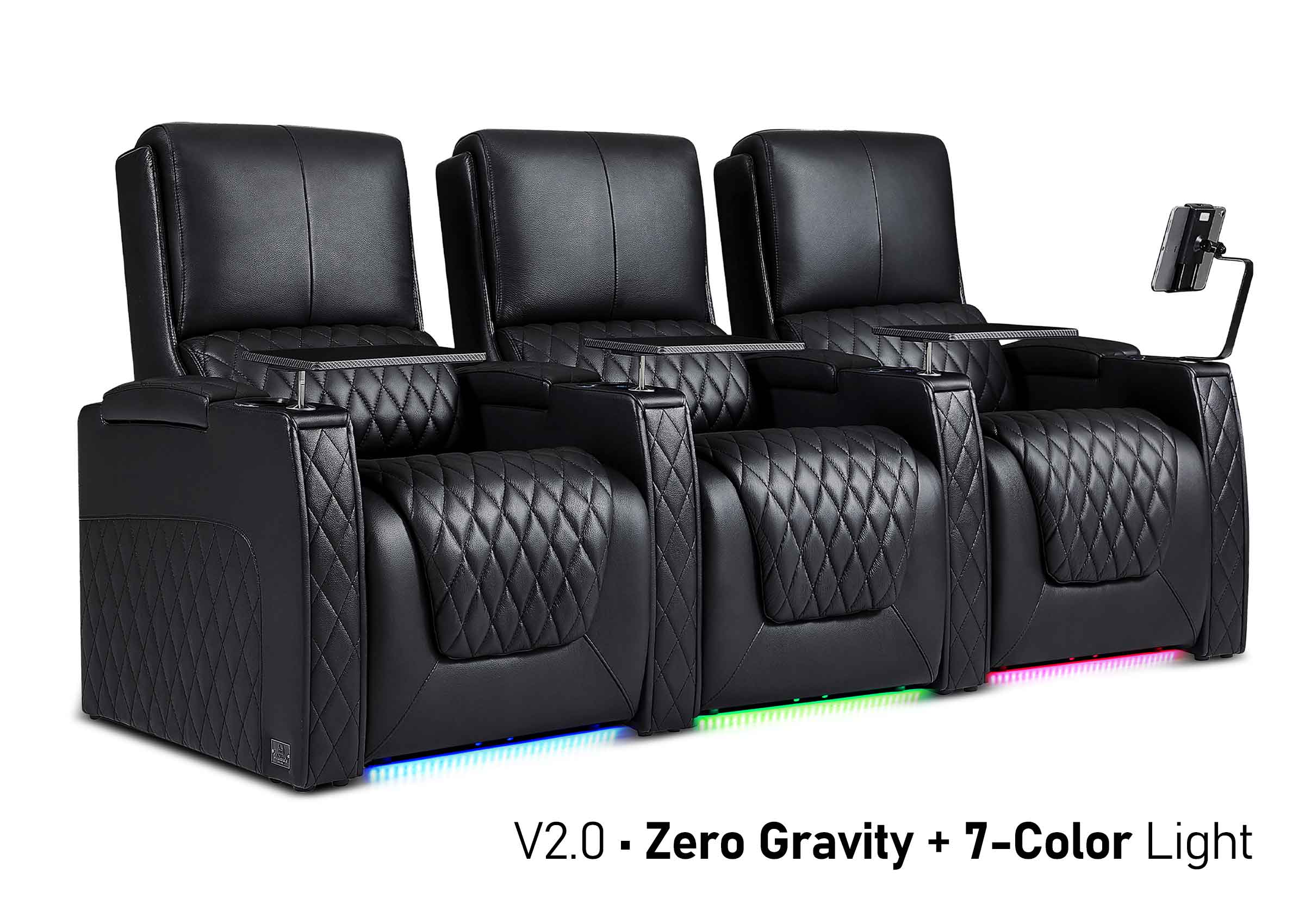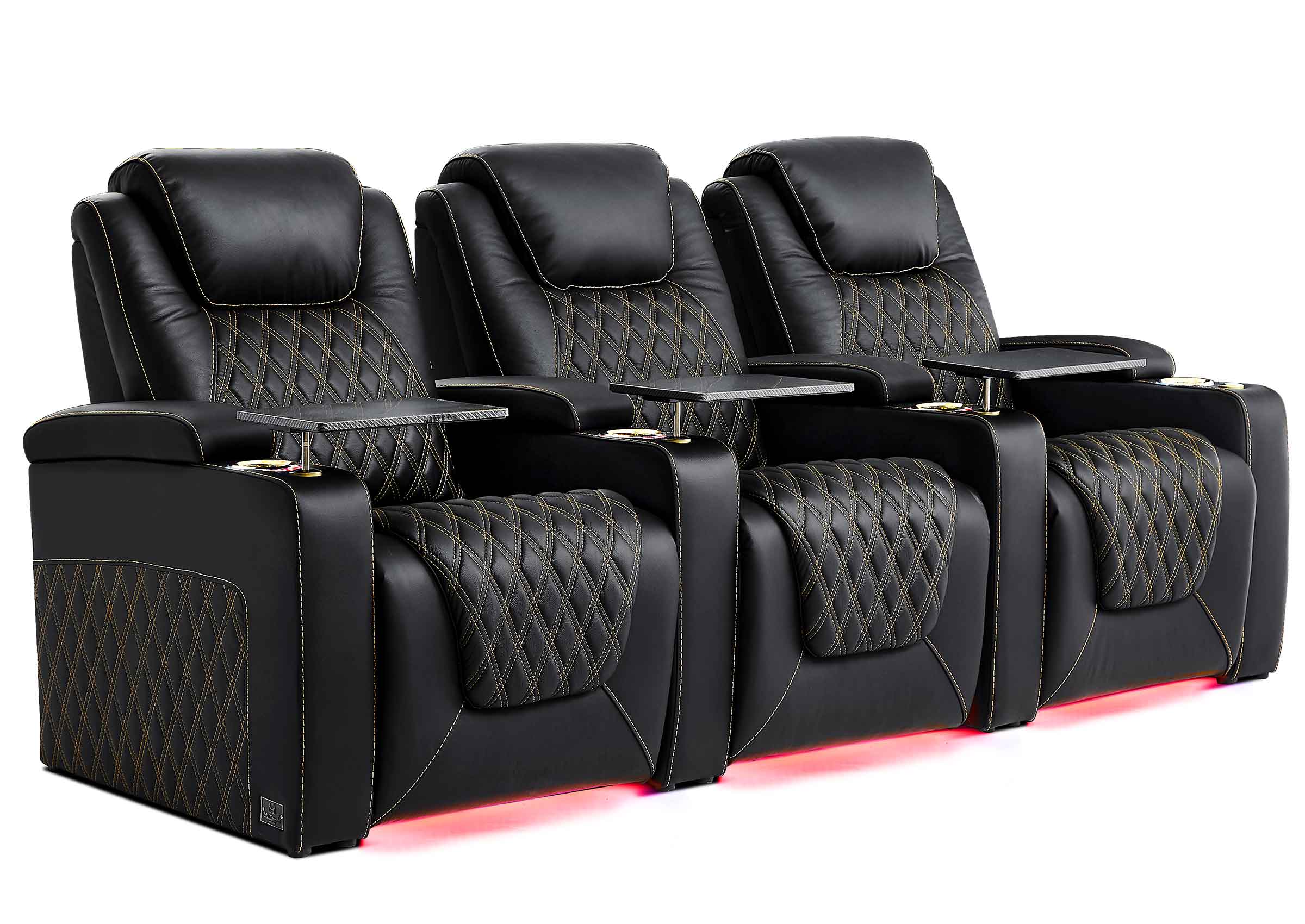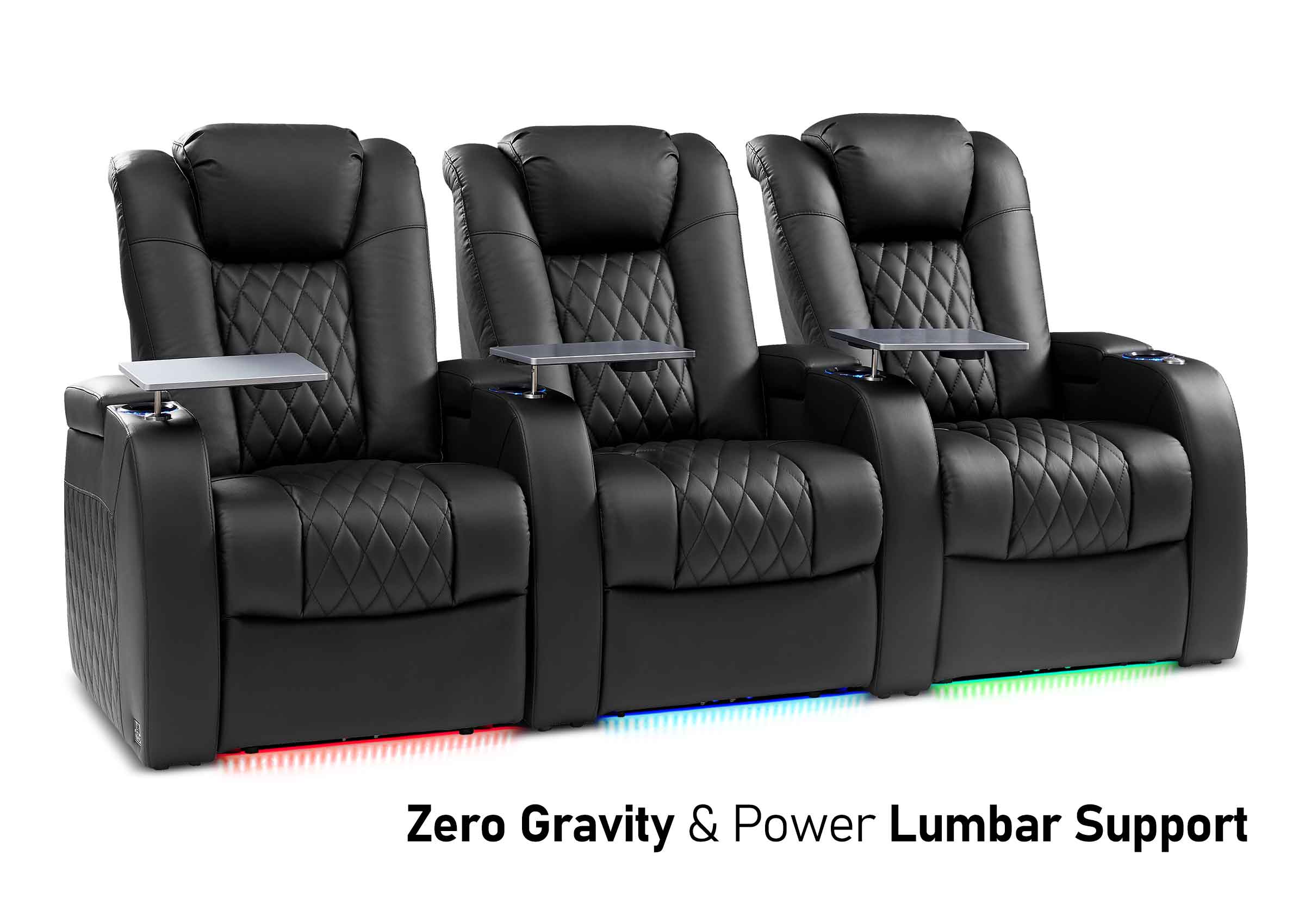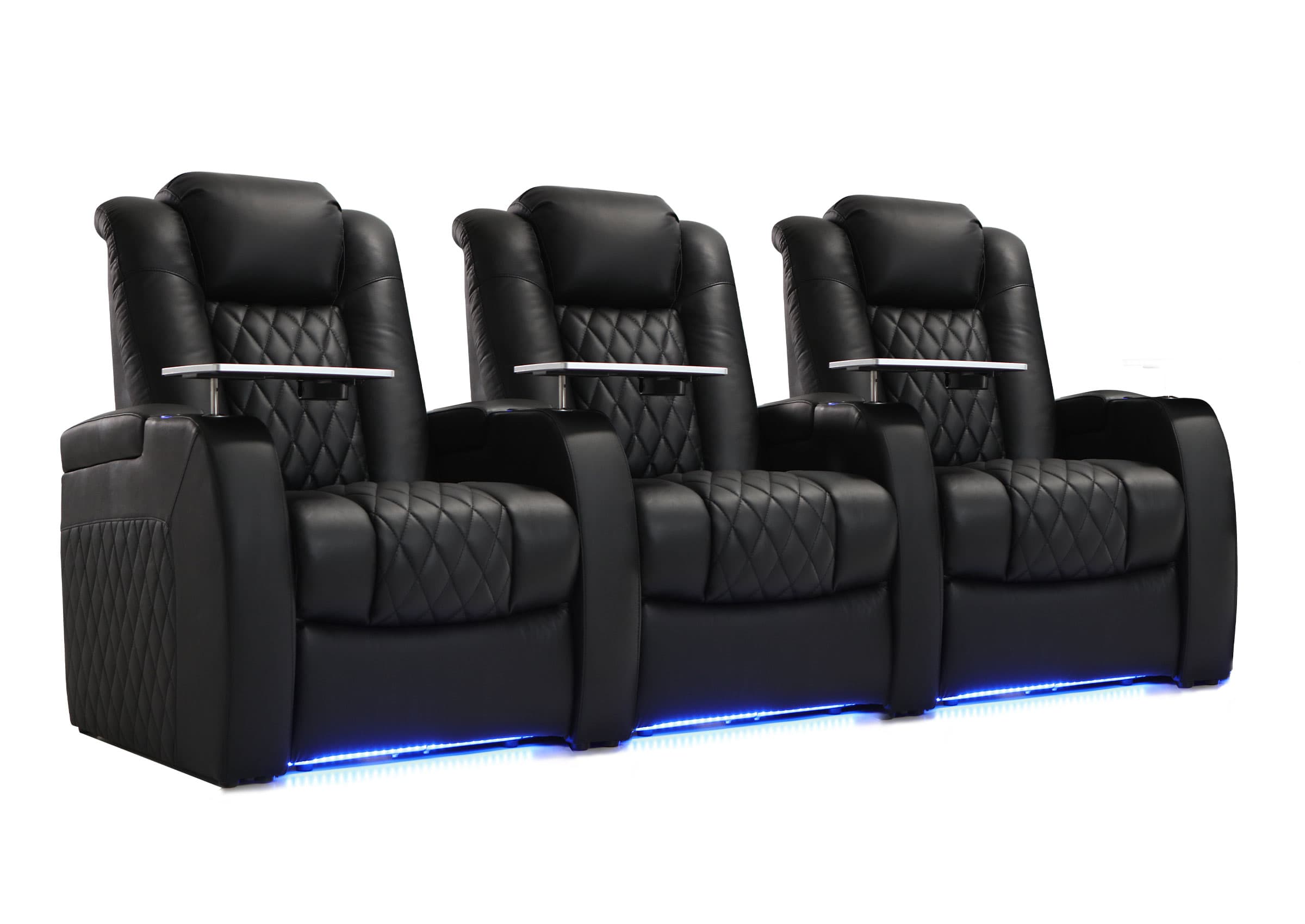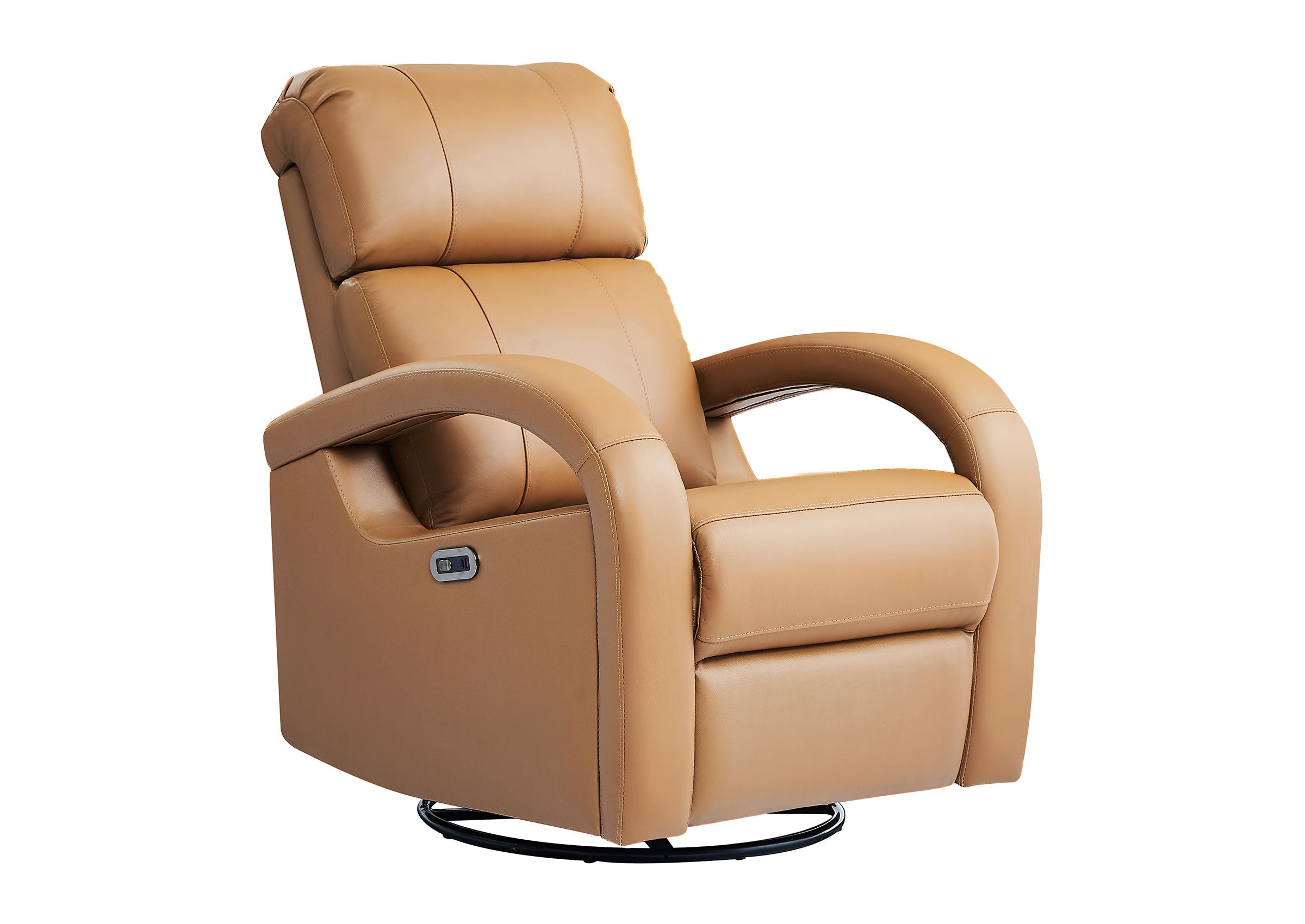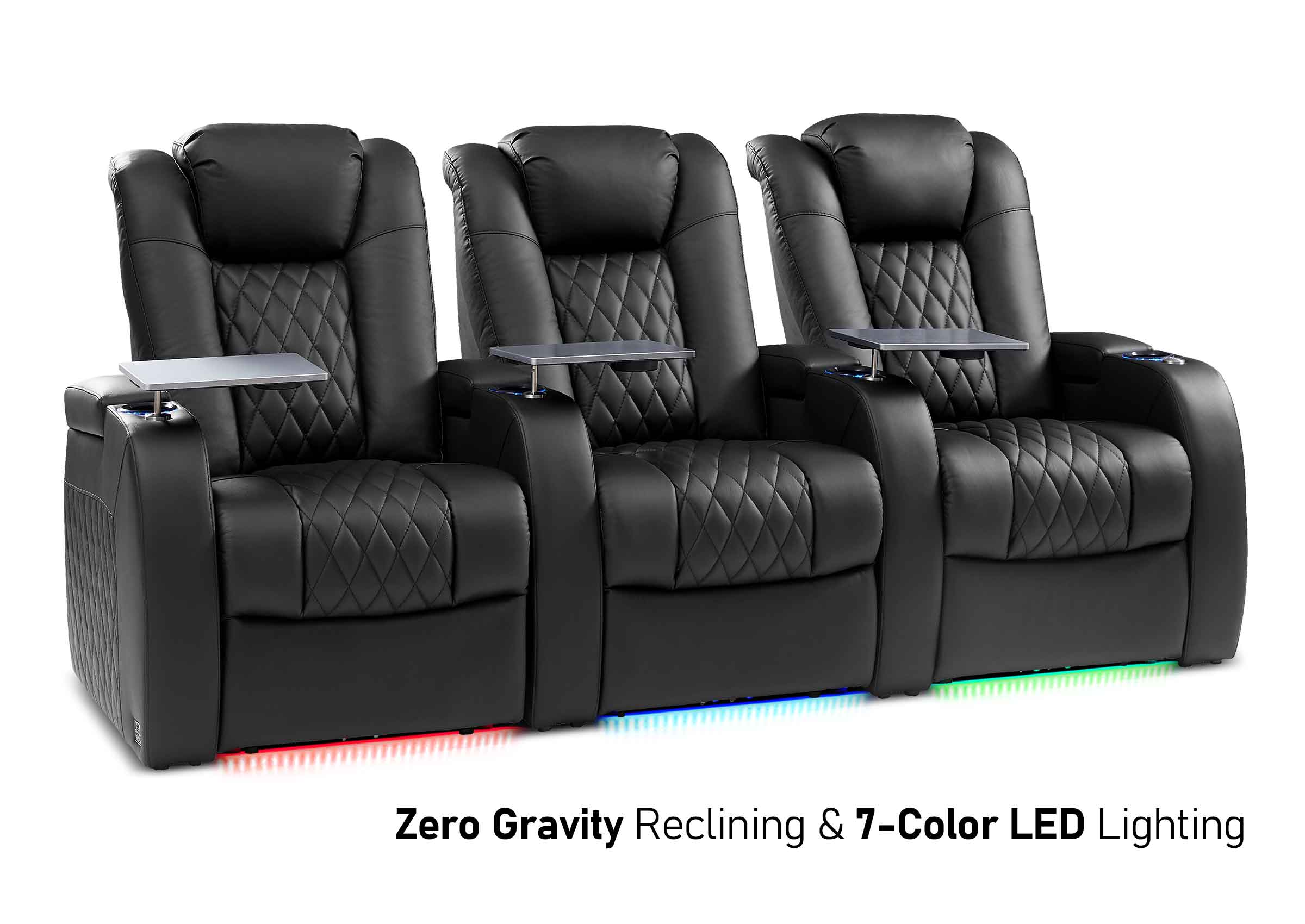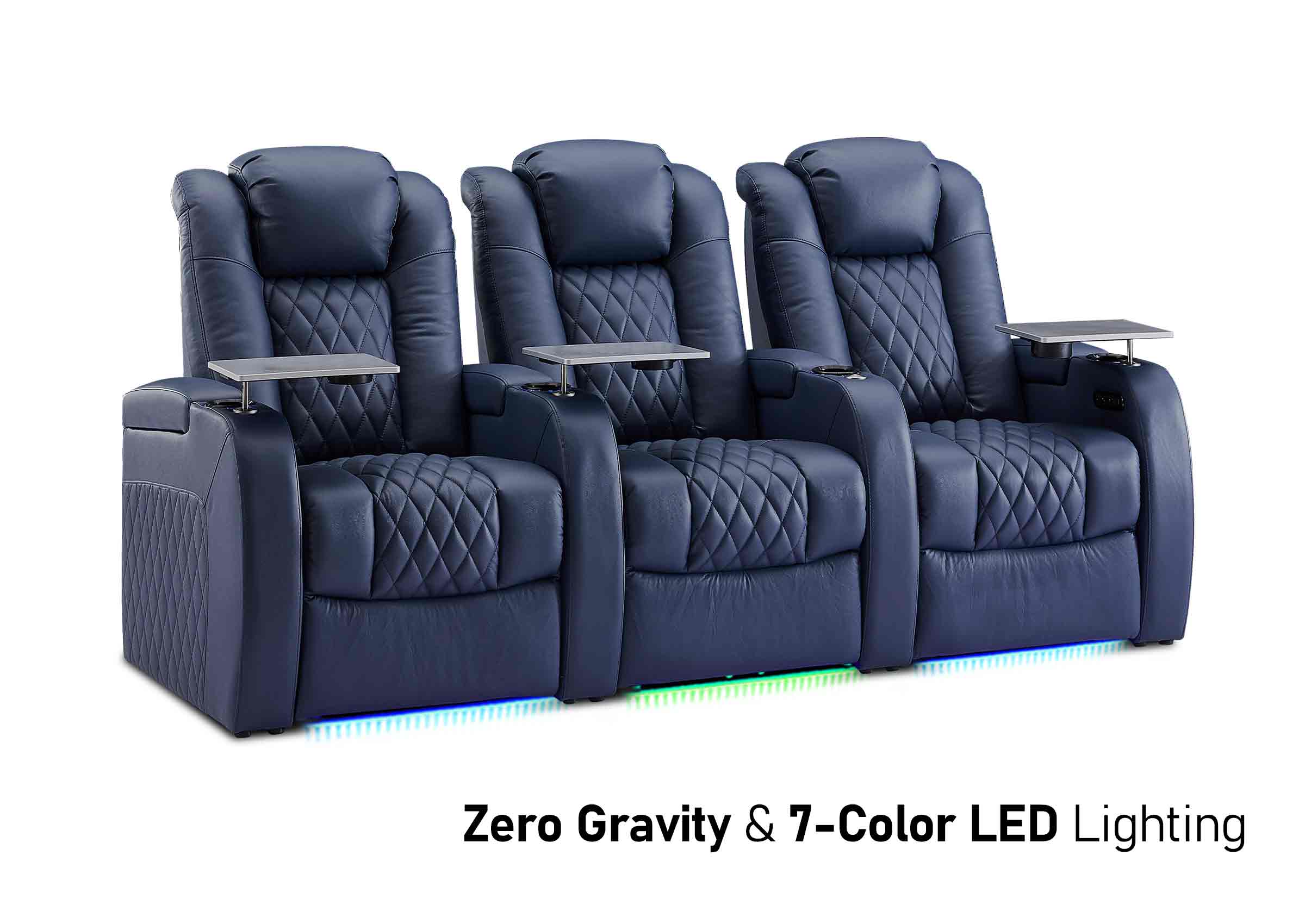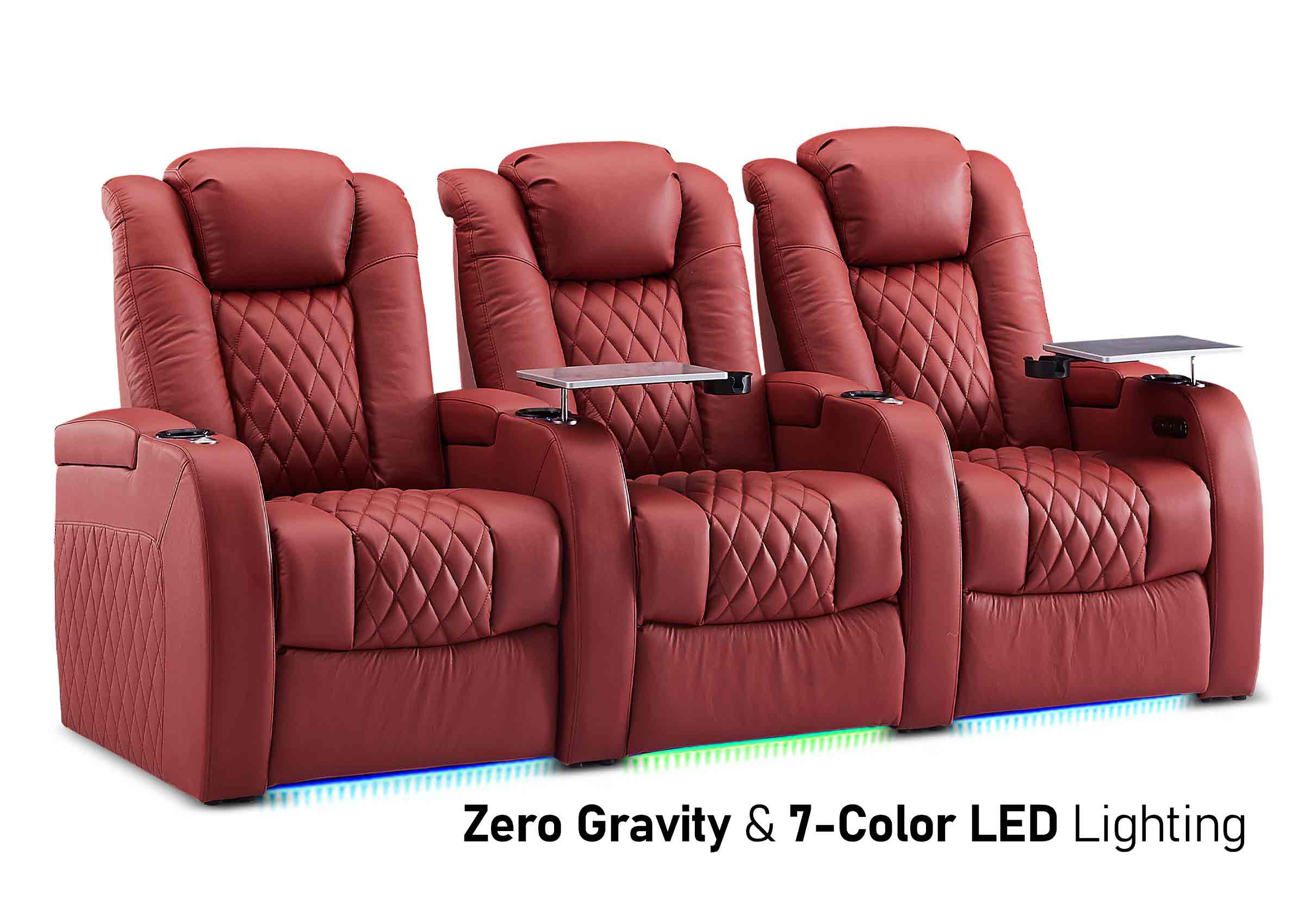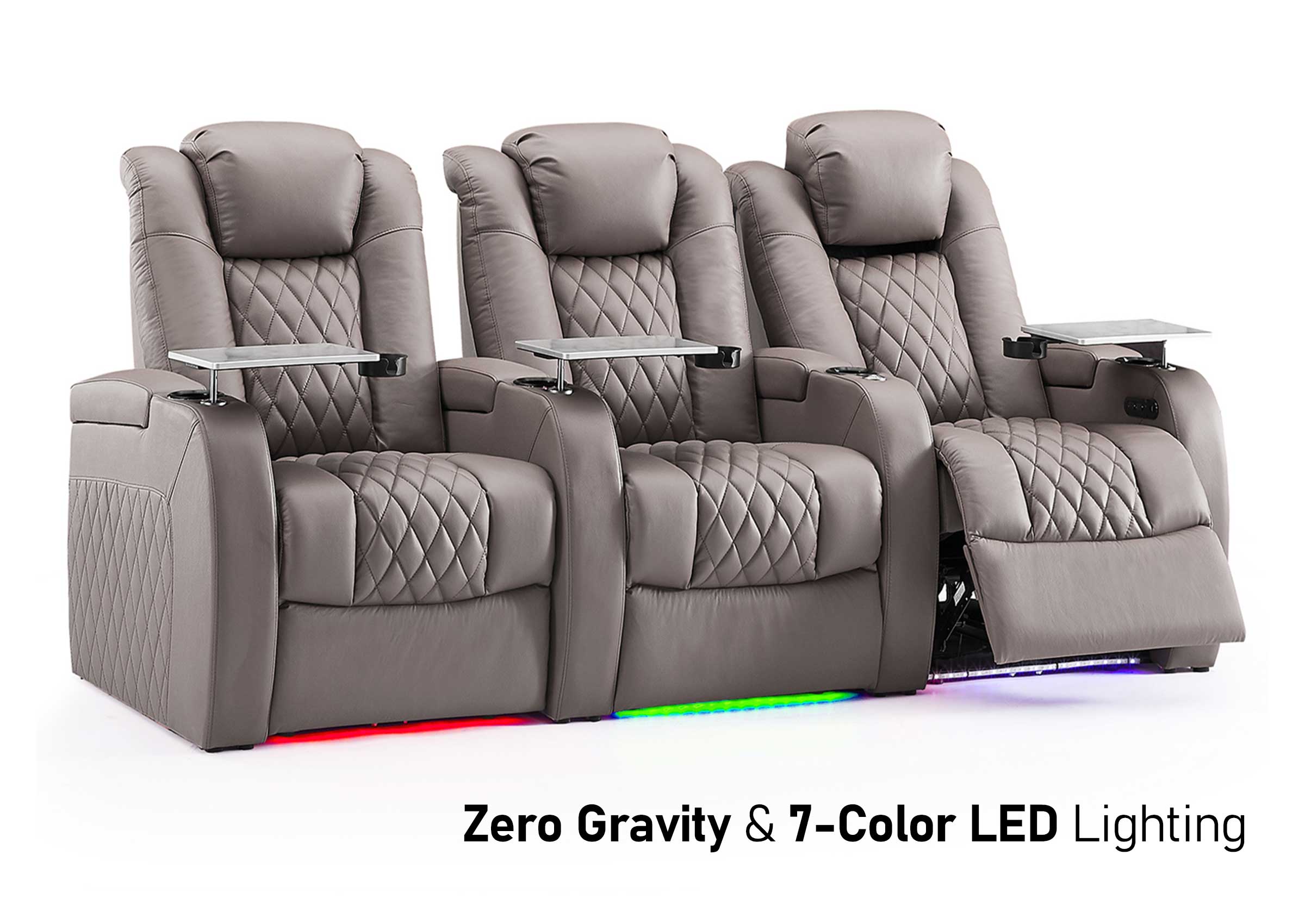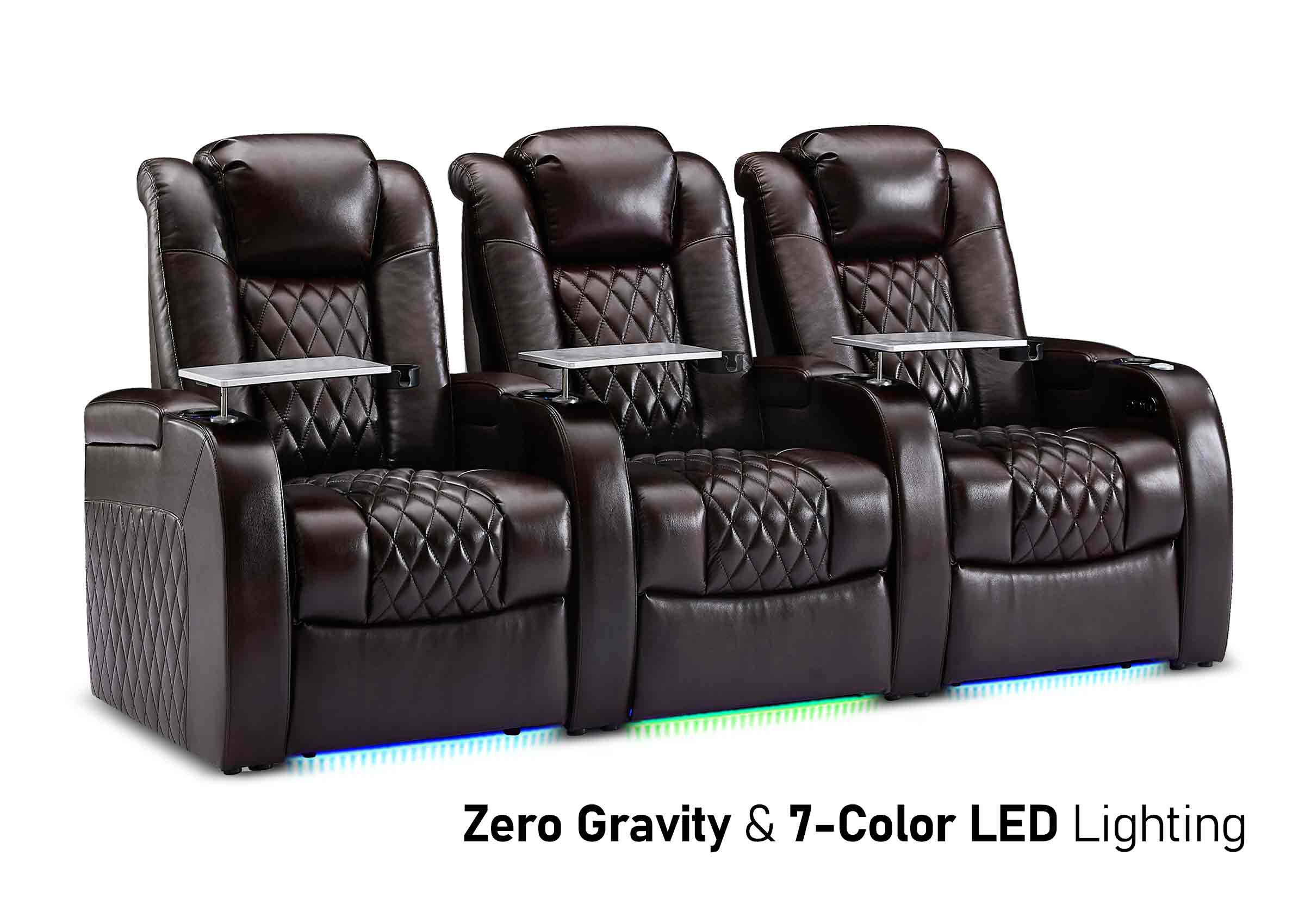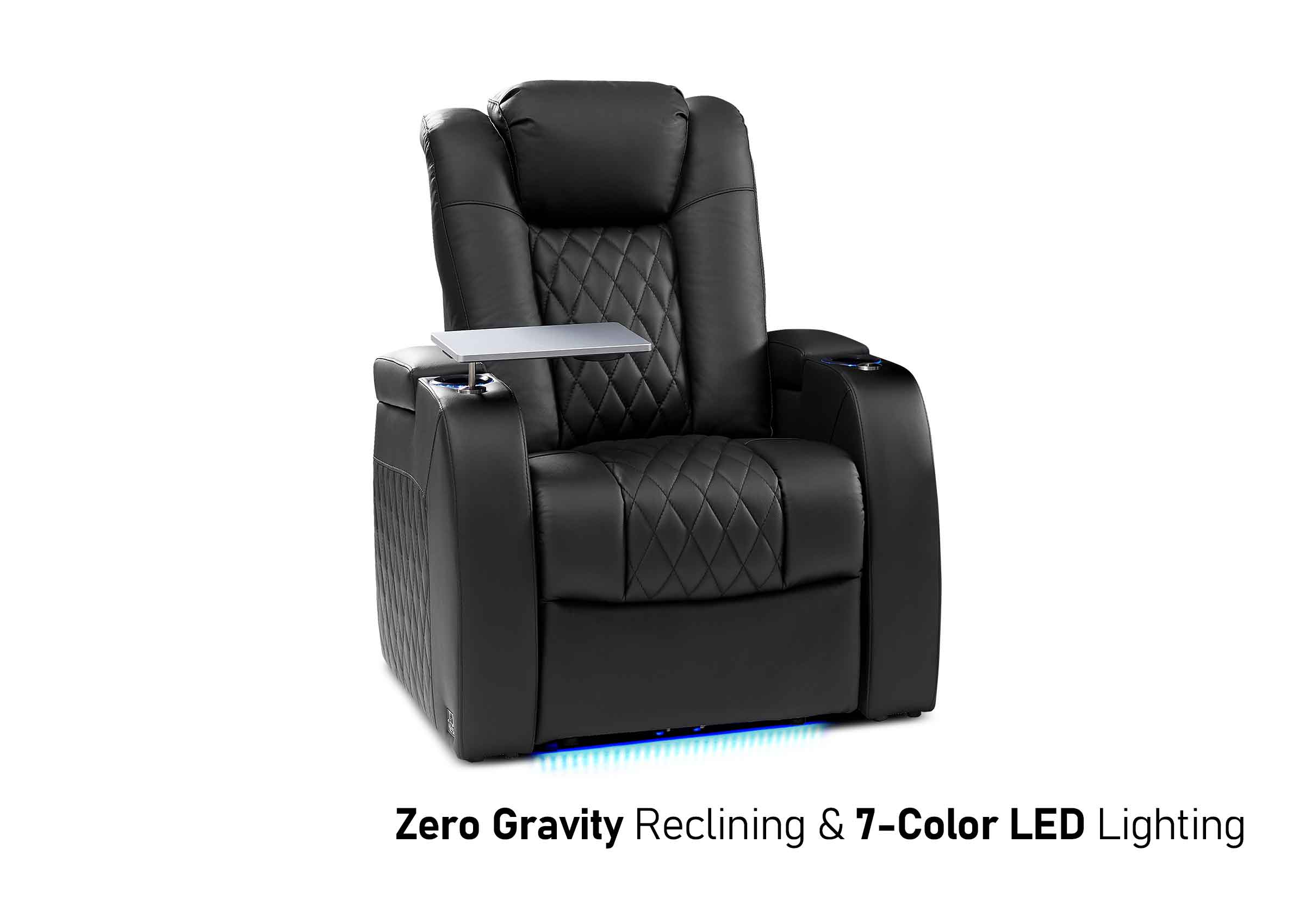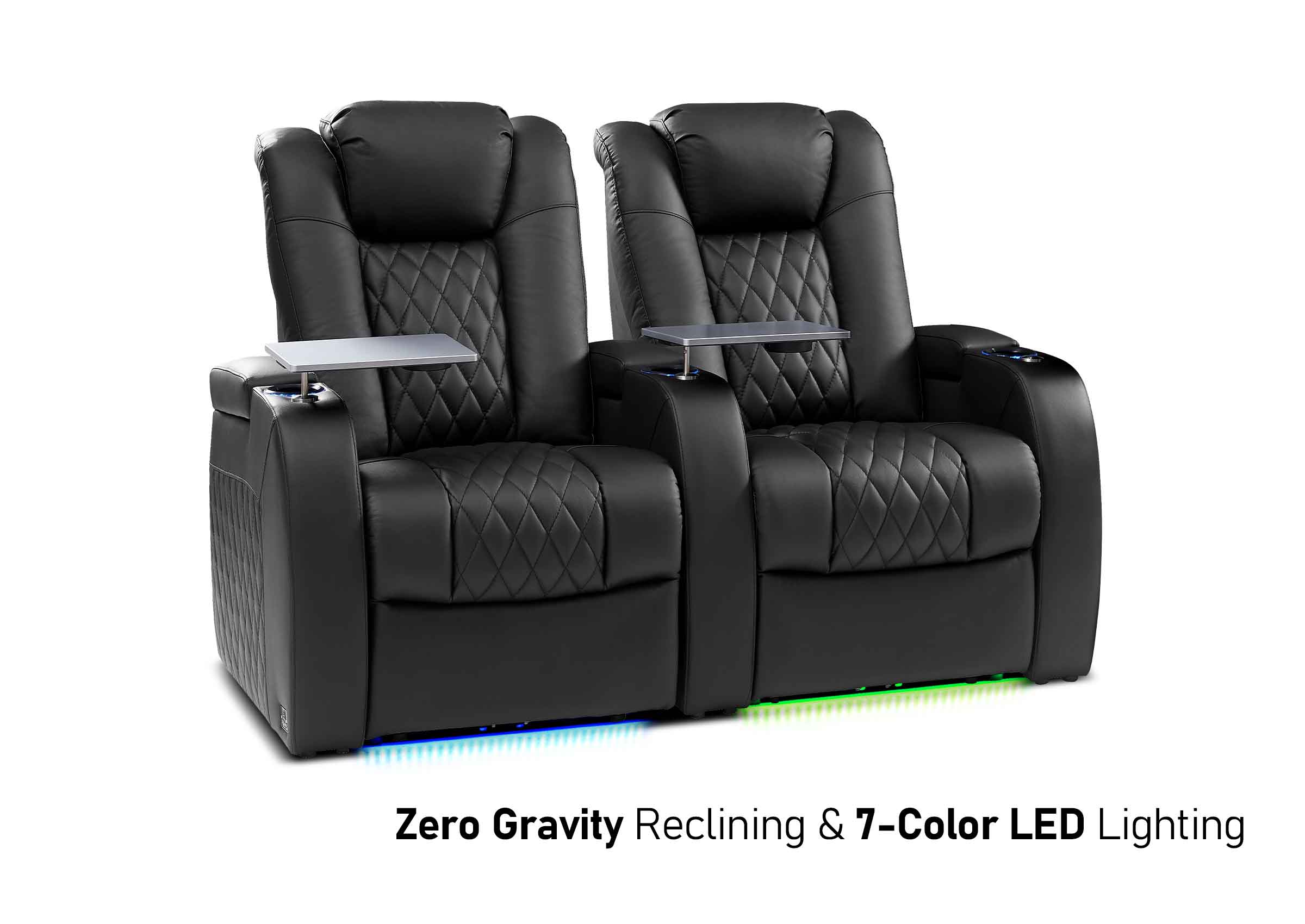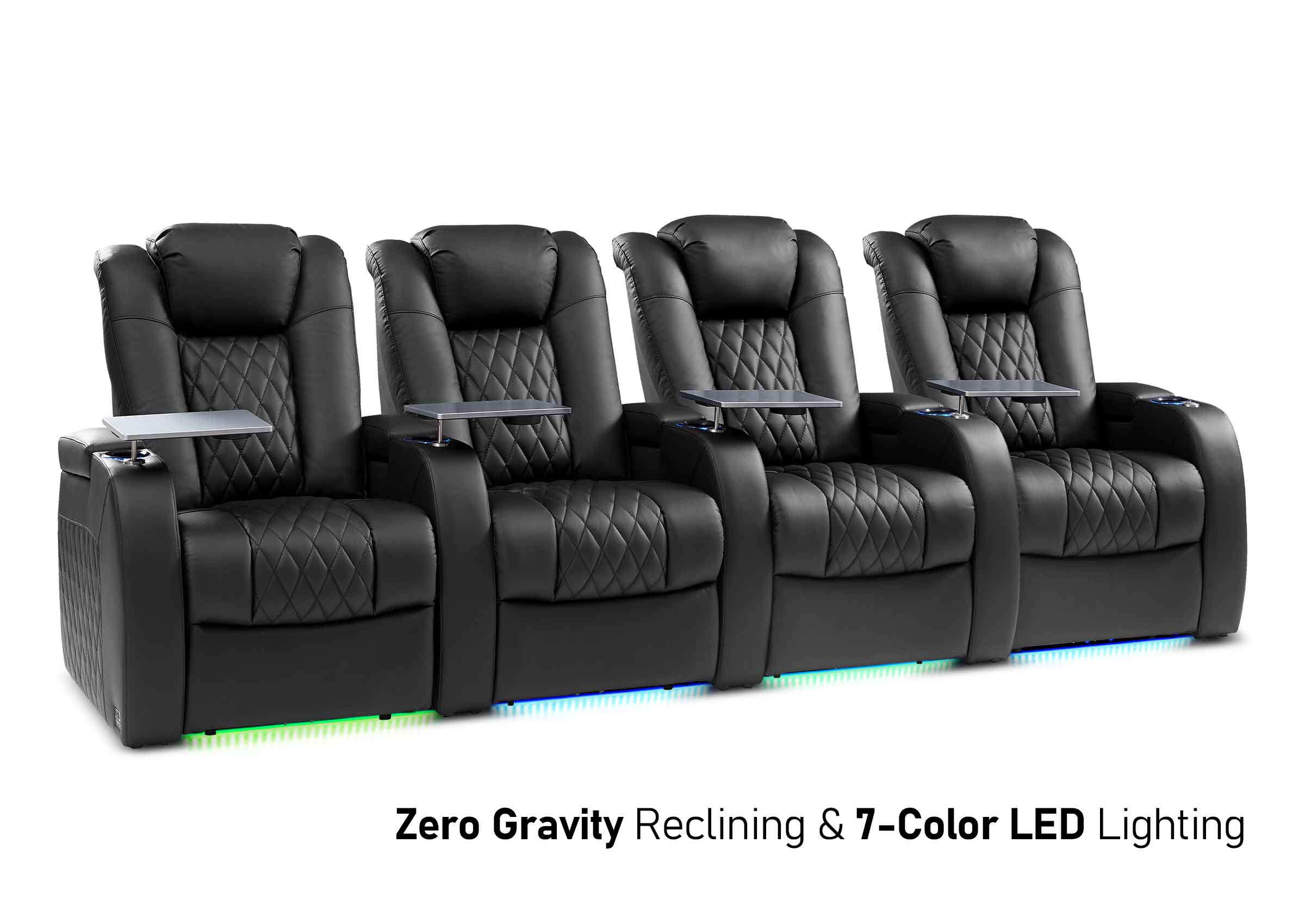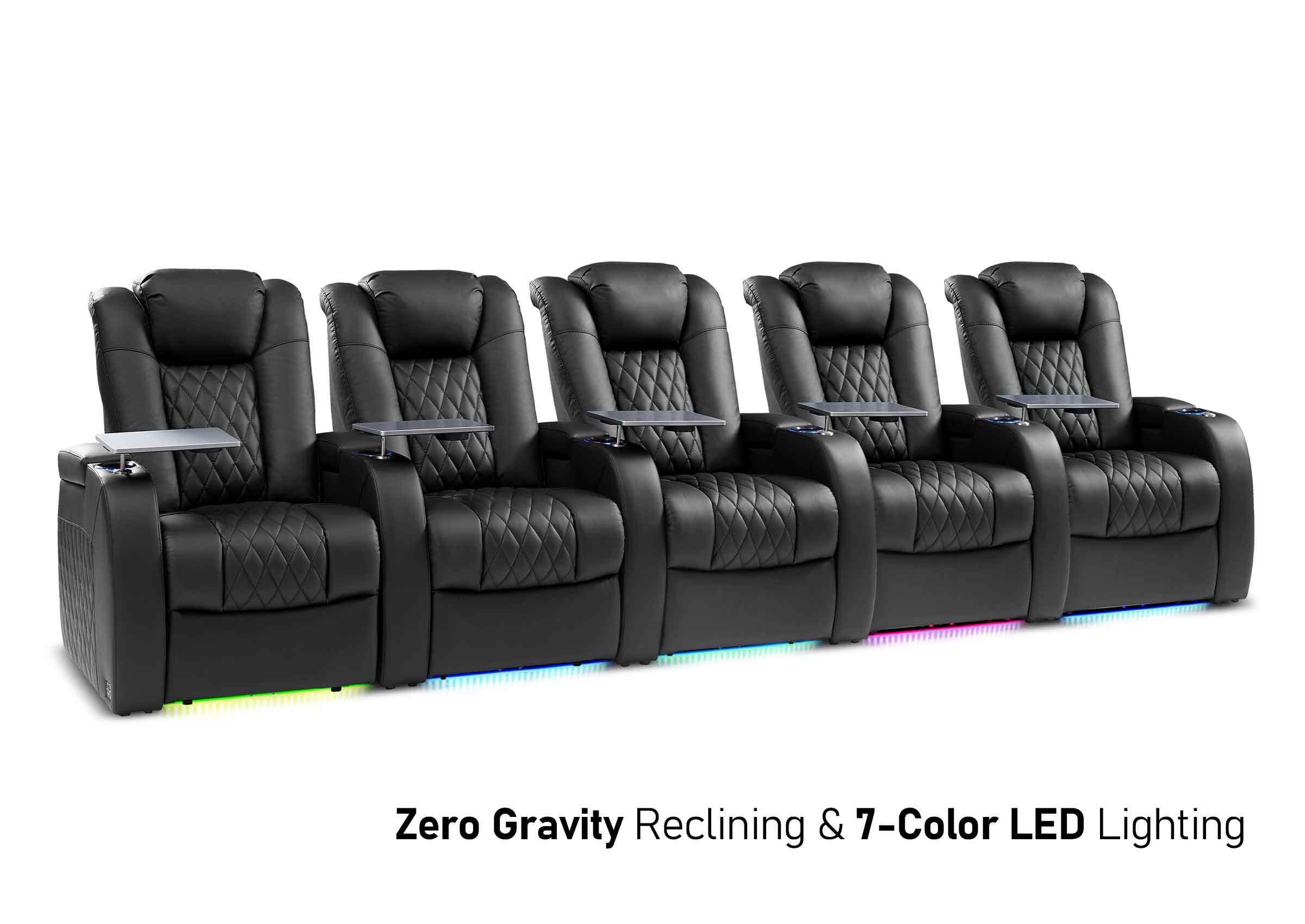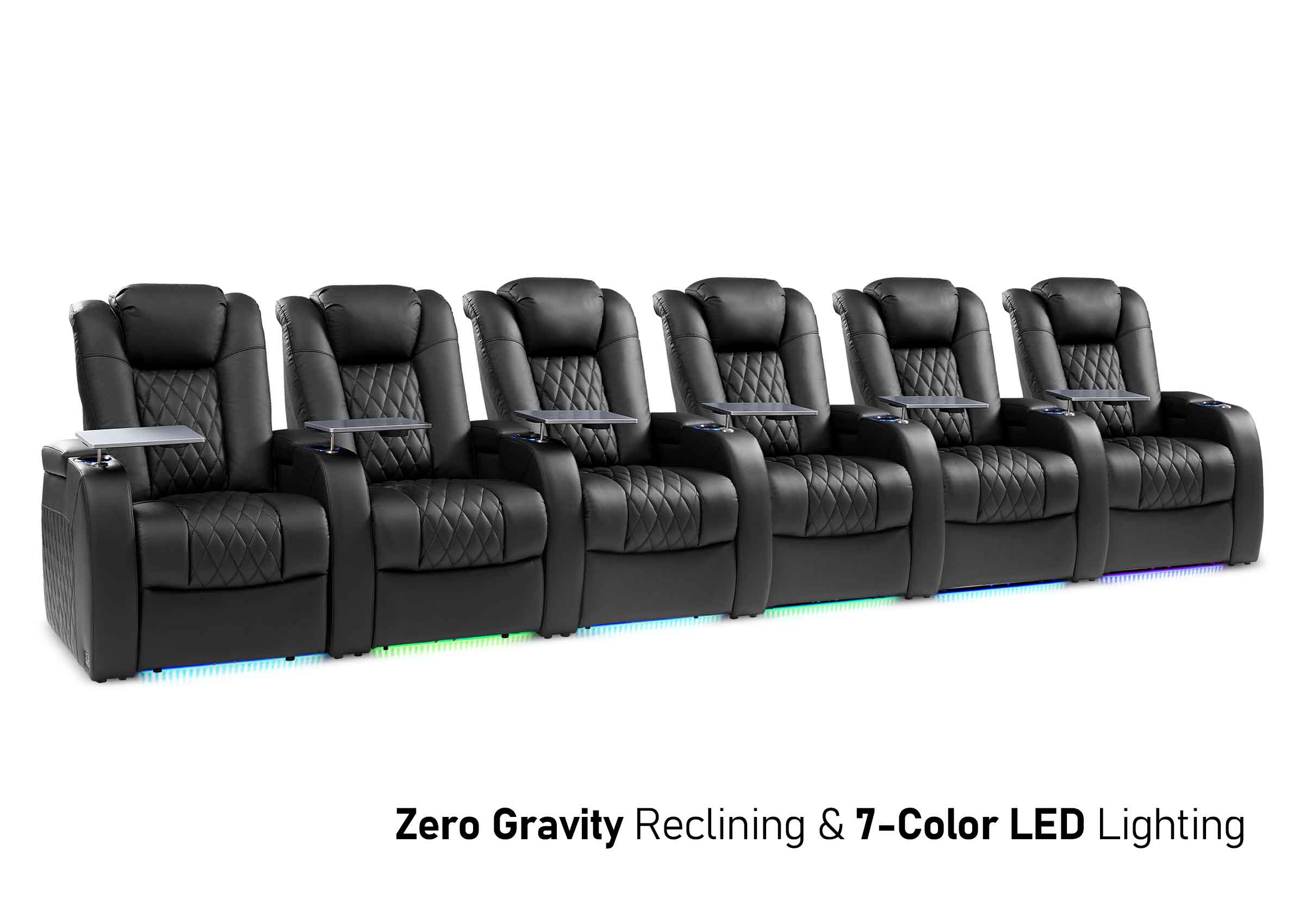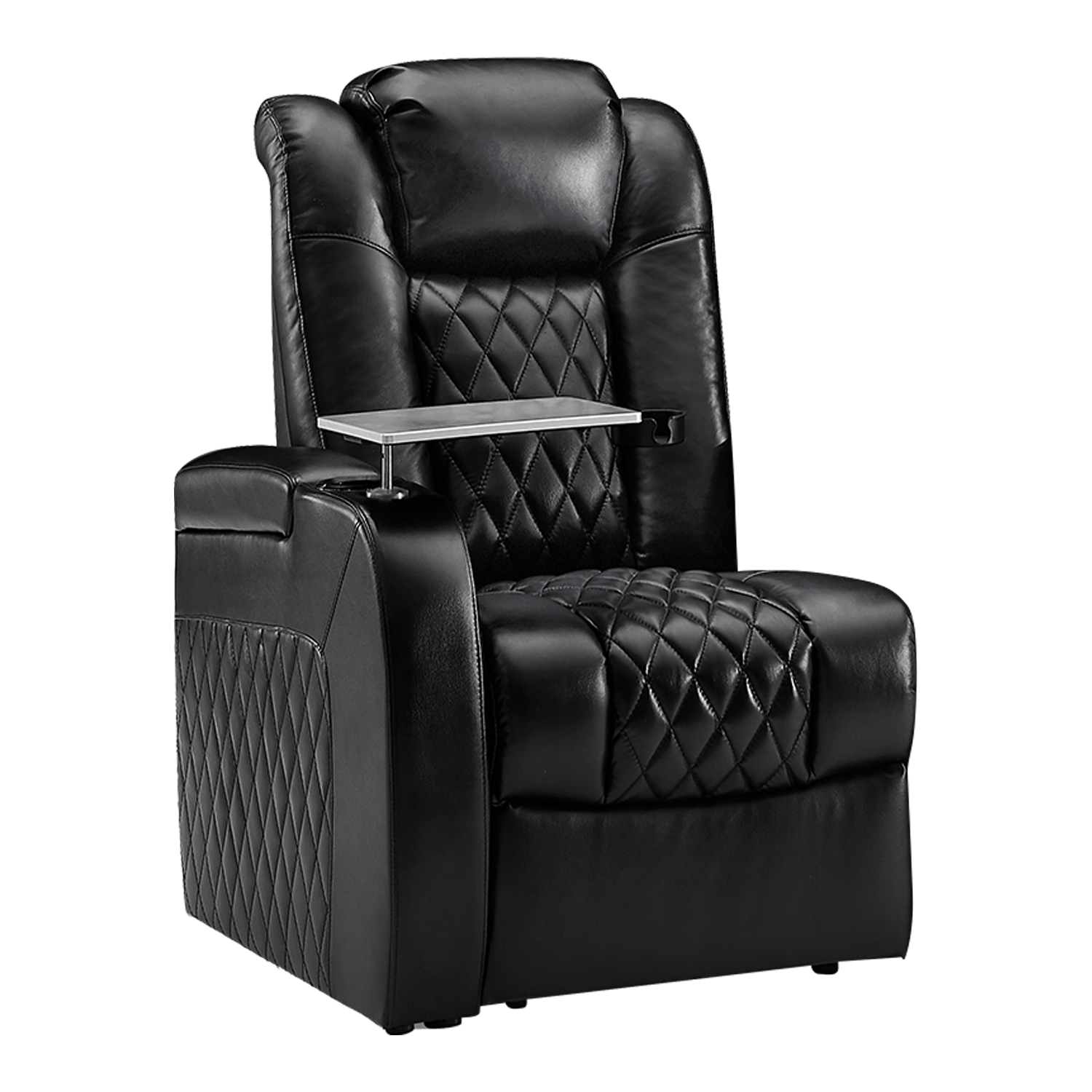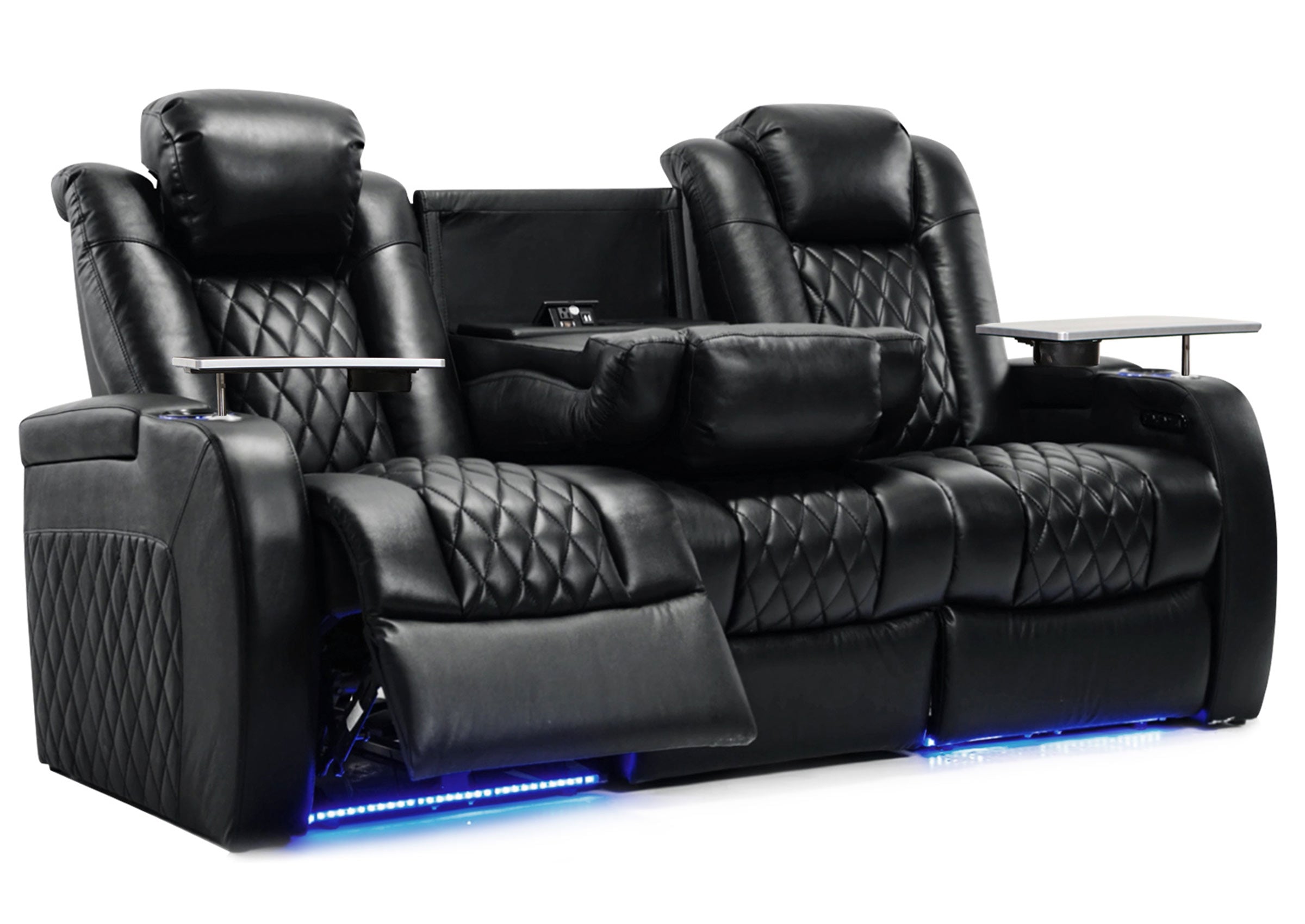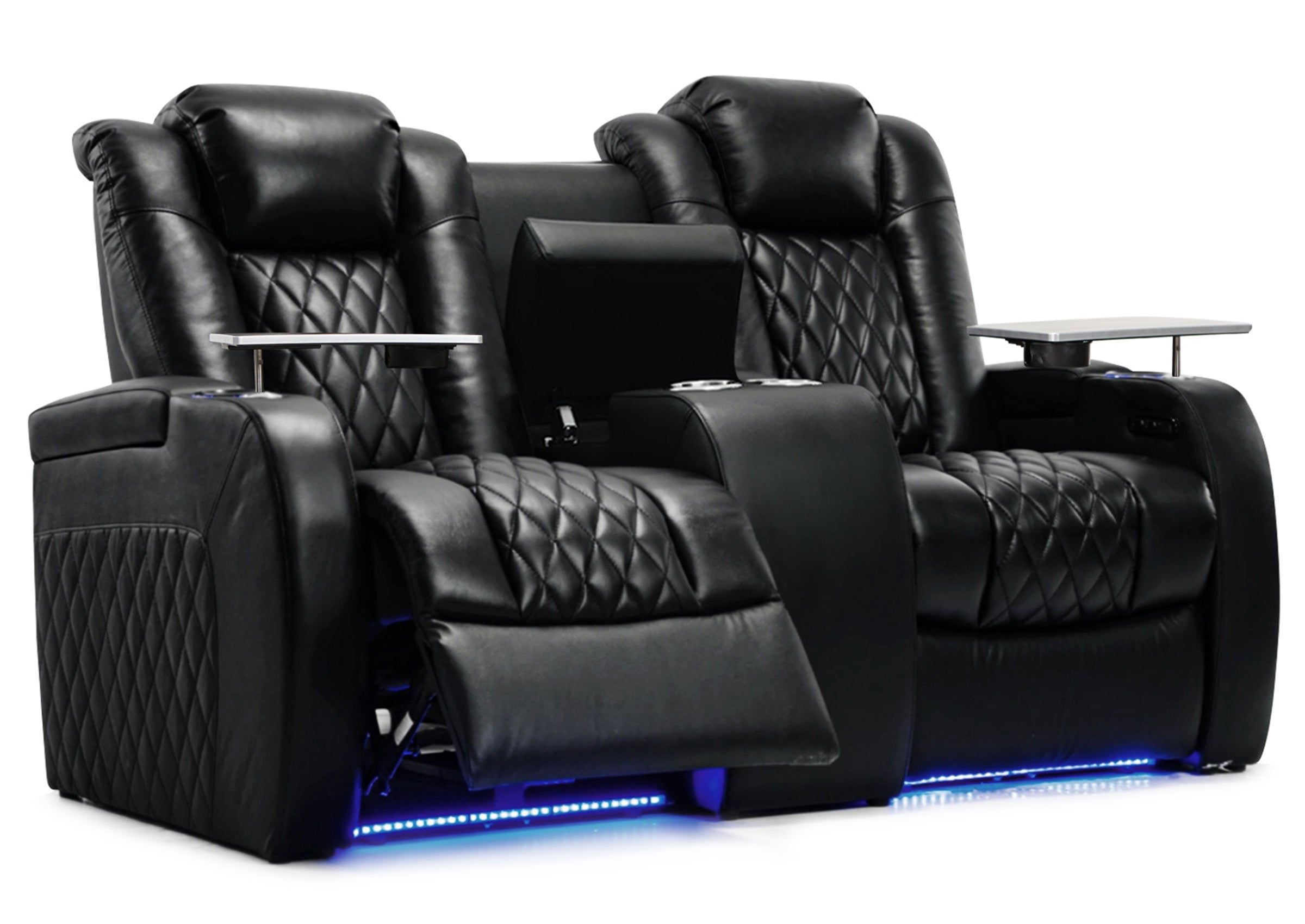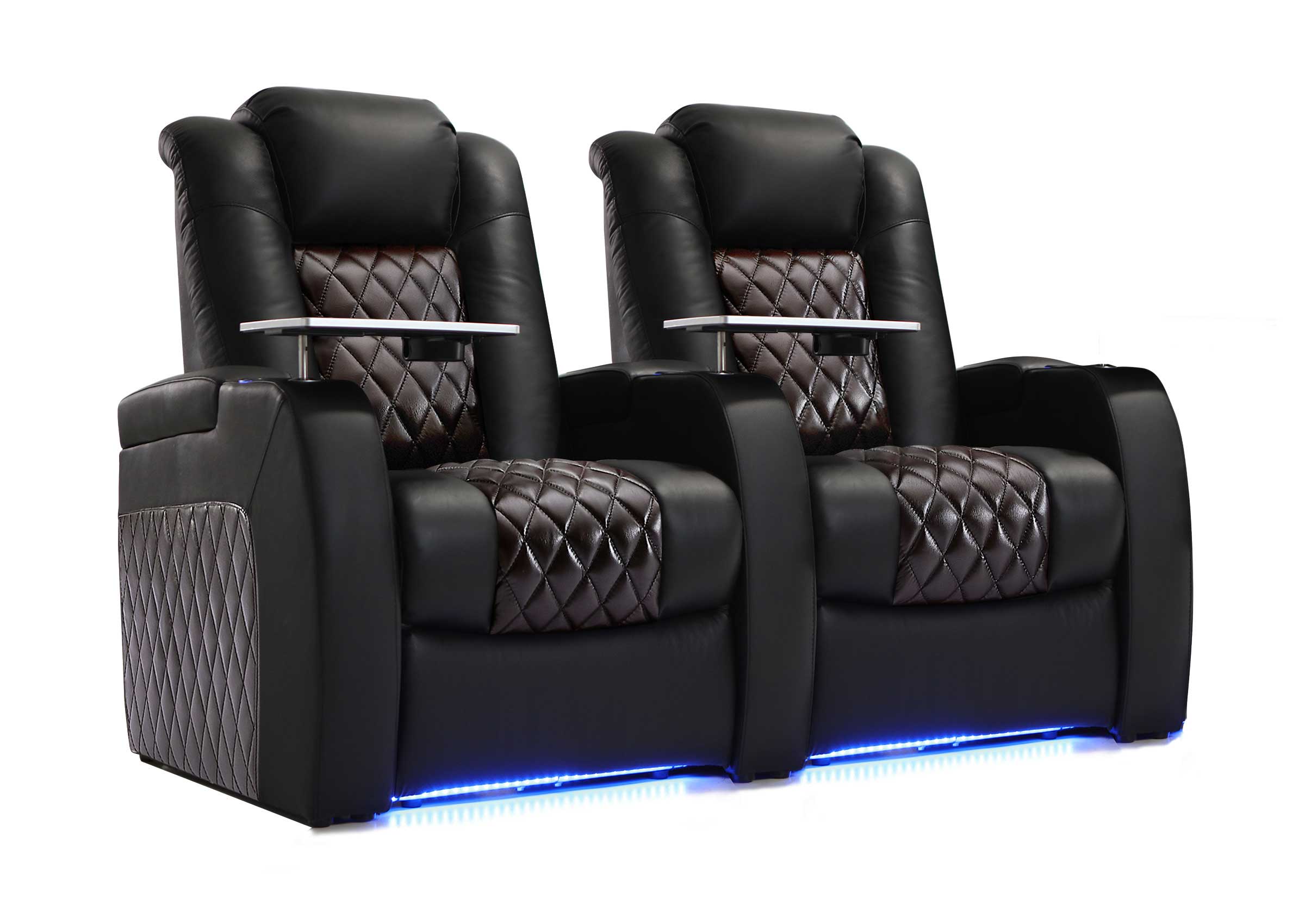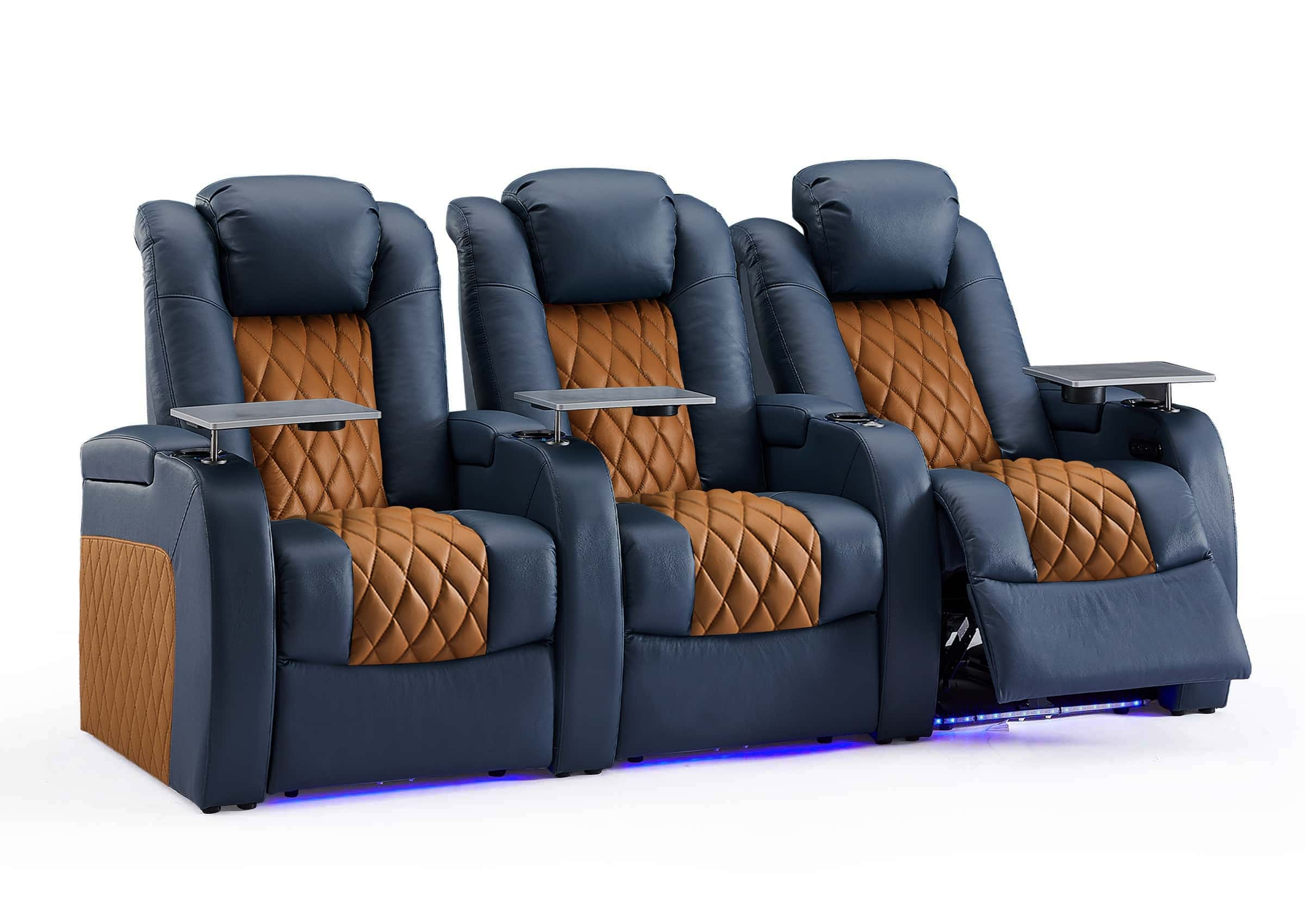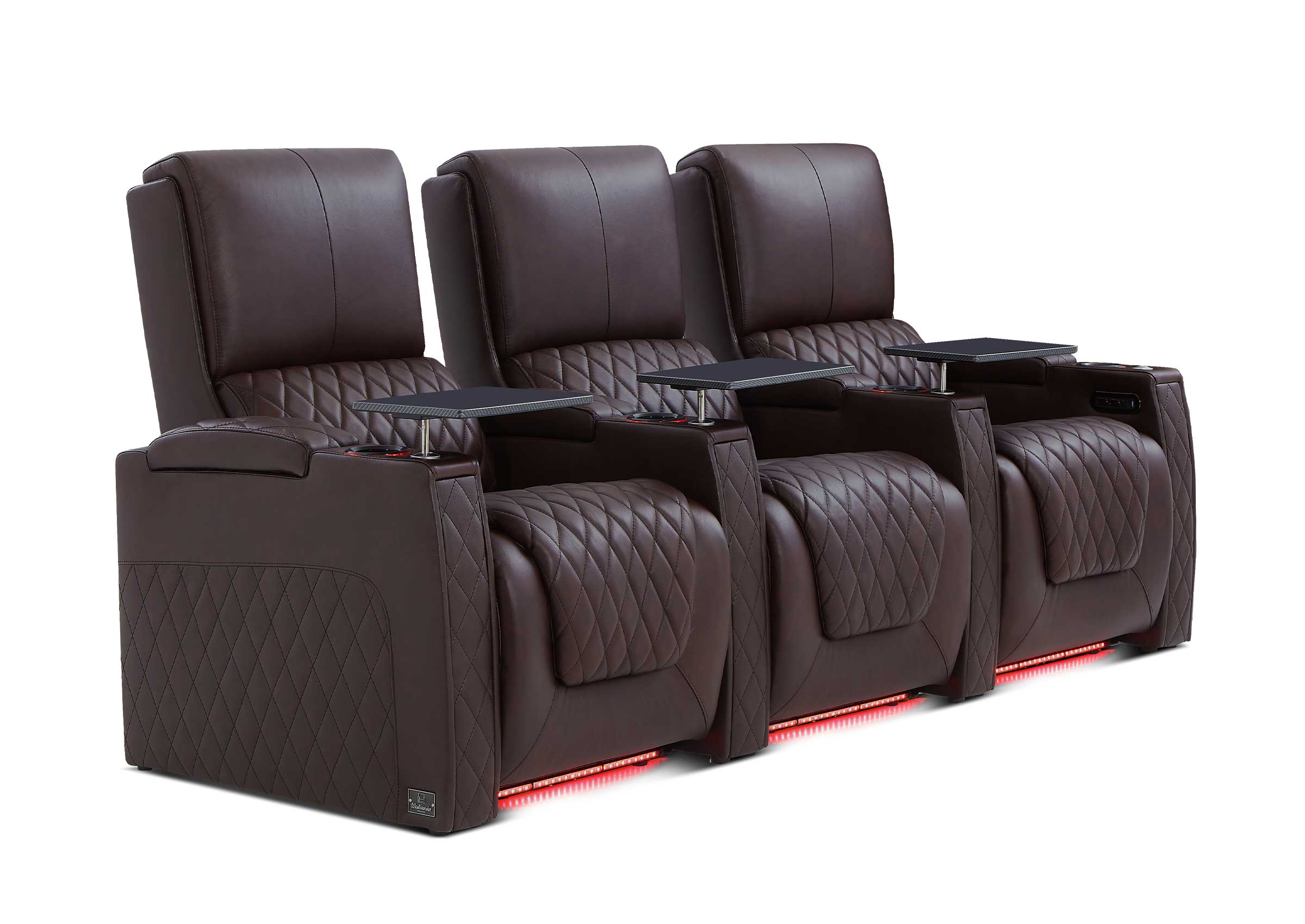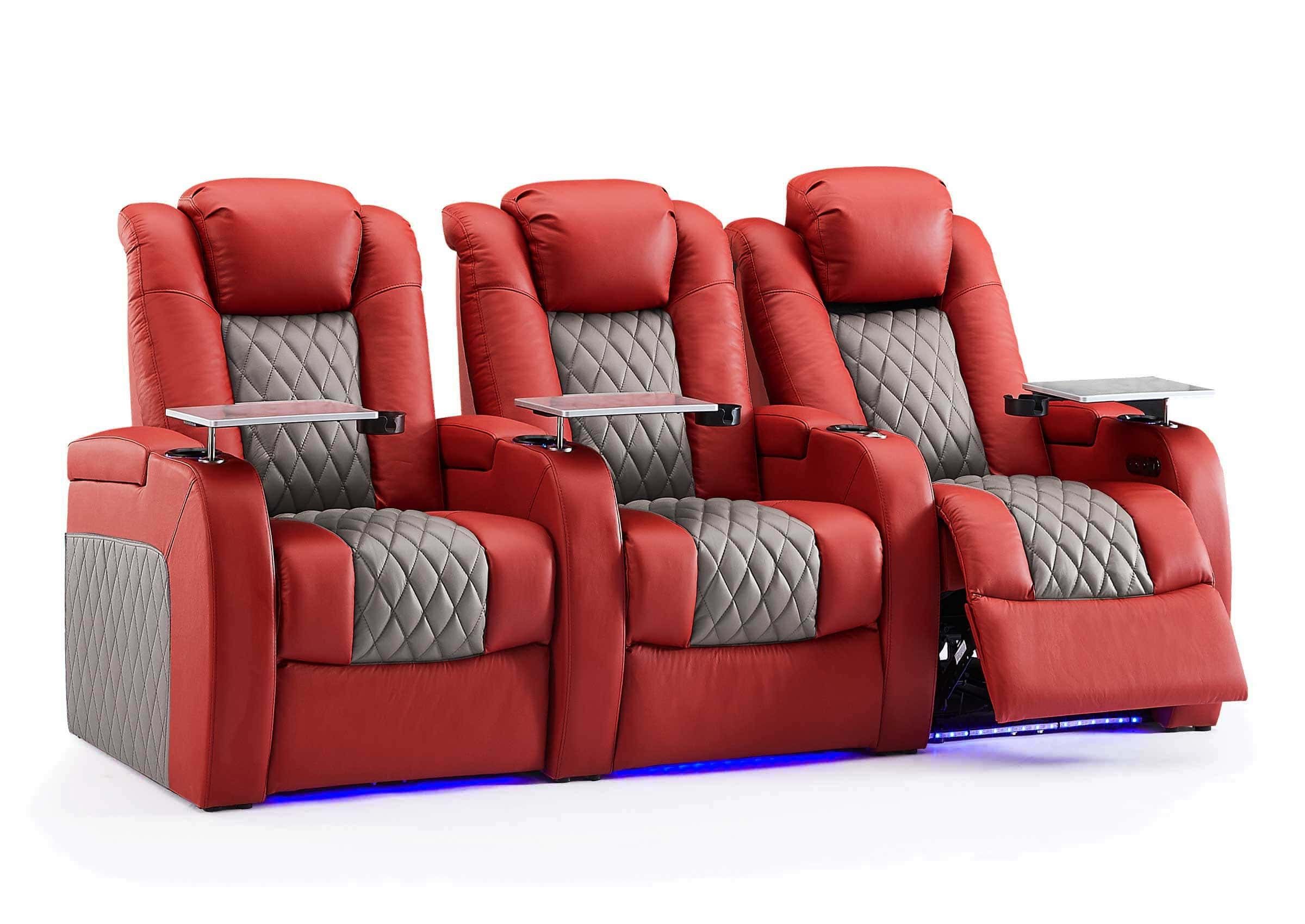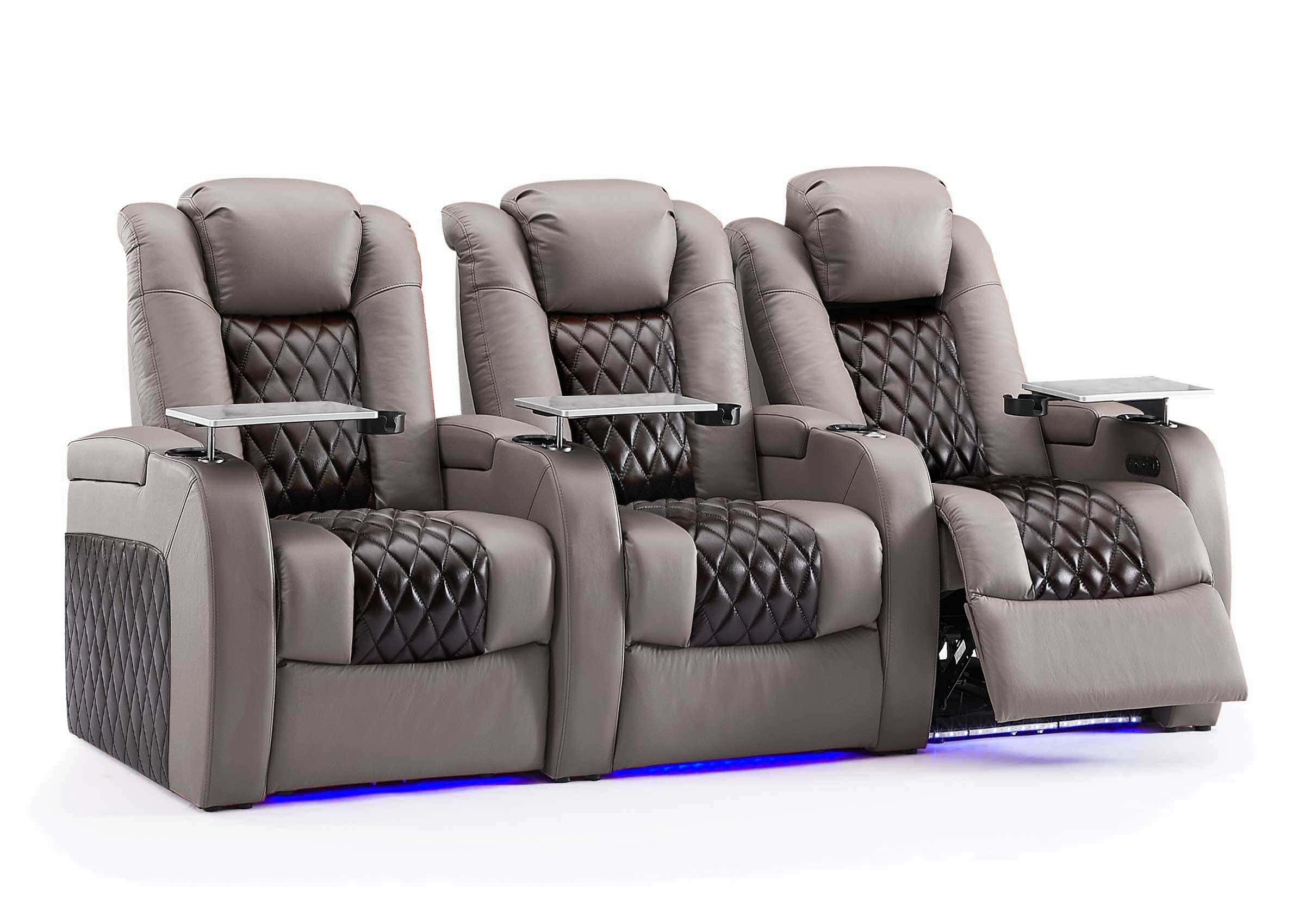Your home theater needs more than just good equipment - the right furniture makes a big difference in how much you'll enjoy watching movies and shows. With more new content available for streaming and people spending more time watching at home, good home theater furniture has become essential. Comfortable seating lets you watch for hours, while well-designed storage keeps your equipment organized. Modern theater furniture offers practical features like charging ports and sound improvements, all while looking great in your space. This guide will help you choose furniture that works well and looks good in your home theater.
Key Considerations for Home Theater Furniture
The right furniture makes a significant impact on your home theater experience. Several practical factors will guide you toward the best choices for your space.
Room Measurements and Layout
The first step involves getting accurate room measurements. A proper layout needs 4 feet of walking space between furniture pieces. Screen size determines ideal seating distance - with a 65-inch TV, your seating should be 8-13 feet from the screen. A detailed floor plan with marked power outlets, windows, and doors will help you arrange furniture effectively.
Viewing Angles and Distances
The best viewing experience comes from seating that faces the screen head-on. In spaces with multiple rows, platforms of 6-12 inches can elevate back seating. Small tables within reach of each seat provide space for drinks and remotes. Proper ventilation for media equipment requires adequate space around cabinets.

Seating Comfort and Support
Long viewing sessions demand seating with high-quality, durable foam padding. The most comfortable options include adjustable headrests for neck support and built-in lumbar features. Power recline mechanisms, along with memory settings, offer convenient position adjustments.
Ergonomic Requirements
Proper theater seating incorporates these key measurements:
The seat depth reaches 20-22 inches for full thigh support
A seat height of 18-20 inches maintains good leg position
Well-placed armrests support relaxed shoulders
The seat back follows your spine's natural curve
Room Style Compatibility
The overall design of your home should guide your furniture choices. Modern spaces pair well with streamlined seating and minimal details. Homes with traditional style benefit from classic elements like rolled arms and tufted upholstery. Your existing furniture tones and textures can inspire complementary material choices.
Material and Color Selection
Durability and maintenance needs point toward treated leather or stain-resistant fabrics. Neutral grays provide a timeless foundation, while deep navy or forest green add sophistication. The combination of different seating types creates an adaptable, welcoming atmosphere.

Essential Home Theater Furniture Pieces
After considering the basic requirements for your space, the next step focuses on selecting specific furniture pieces. The right combination of home theater seating and storage solutions creates both comfort and functionality.
Home Theater Seating Choices
Recliners and Loungers
Power recliners offer smooth, quiet operation with preset positions at the touch of a button. Manual recliners cost less but require physical effort to adjust. Today's models include practical features such as USB charging ports, hidden storage in armrests, and sturdy cup holders. Premium options add cooling fans, massage functions, and LED base lighting.

Sectionals and Sofas
Modular sectionals provide flexibility for different room layouts, making them a versatile home theater seating option. The pieces can separate for intimate gatherings or connect for larger groups. Leather upholstery offers durability and easy cleaning but may feel cold or sticky against skin. Performance fabrics resist stains while providing more warmth and texture variety for your home theater seating.

Storage Solutions
Media Consoles
A well-designed media console keeps equipment organized and accessible. Standard widths of 60-75 inches accommodate most TV sizes and components. Key features include adjustable shelves, ventilation slots, and removable back panels for easy cable access. Glass doors protect equipment while allowing remote signals to pass through.
Cable Management
Proper cable management prevents tangles and looks tidier. The best consoles include built-in channels and clips to route wires neatly. Removable covers hide cables while maintaining easy access for changes. Some models feature power strip compartments to keep outlets organized.
Equipment Support
AV Stands
Dedicated AV stands provide stable support for projectors and speakers. Heavy-duty stands with adjustable heights work best for ceiling-mounted equipment. Speaker stands should include cable channels and stable bases to prevent tipping.
Wall Mounts
Wall-mounted TVs and speakers save floor space and improve sight lines. Full-motion mounts allow screen angle adjustments for different seating positions. The mount's weight rating should exceed your TV's weight by at least 50% for safety. Professional installation helps ensure secure attachment to wall studs.
Extra Features for Better Movie Watching
The right furniture sets up your home theater, but additional elements can significantly improve your viewing experience. Sound control, proper lighting, and thoughtful decor work together to create an immersive atmosphere.
Sound-Absorbing Materials
Acoustic furniture plays a key role in sound quality. Tall media cabinets with fabric panels help absorb sound reflections. Upholstered wall panels behind seating reduce echo while adding visual interest. Strategic placement of heavy curtains and plush carpets prevents sound from bouncing off hard surfaces. Bass traps in corners can improve low-frequency response.
Room Lighting Setup
Smart lighting adds convenience and atmosphere. Wall sconces with dimming controls provide gentle illumination without screen glare. LED strip lights under seating or behind media consoles create subtle ambient glow. Small table lamps with warm bulbs work well for times when you need more light. Motion sensors near steps enhance safety during movies.

Room Decoration and Style
Personal decor transforms a basic theater into a custom space. Throw pillows in coordinating colors add comfort and style. Area rugs define seating zones while improving acoustics. Movie posters or abstract art can fill wall spaces between acoustic panels. A small side table for each seat keeps snacks and drinks within reach.
Colors and Materials
The right color scheme ties everything together. Dark walls and ceilings minimize light reflection. Medium-toned furniture prevents the room from feeling too dark. Accent pieces in metallic finishes add subtle sparkle without causing glare. Neutral colors for large pieces allow for easy decor updates.
Room Temperature and Airflow
Proper air circulation keeps viewers comfortable. Ceiling fans with quiet motors help move air without adding noise. Furniture placement should not block air vents. Thermal curtains near windows help maintain consistent temperatures. Remote-controlled fans built into some theater seats provide personal cooling.
Choose the Right Home Theater Furniture for the New Year!
A good home theater starts with the right furniture. Comfortable seating and smart storage make watching movies more enjoyable at home. When you choose furniture with good support, proper lighting, and sound control, you'll create a space that works well for everyone. Take time to measure your room and pick pieces that fit your needs - you'll enjoy your home theater more when everything works well together.







